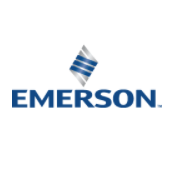Emerson has issued the following statement regarding the future of refrigerants for air conditioning and heat pump applications.

The HVAC industry is at a pivotal time with the upcoming efficiency regulations in the U.S. along with preparations to transition to lower Global Warming Potential (GWP) refrigerants. Manufacturers are in the midst of product redesigns while also evaluating their best low GWP options. Amid the uncertainty with the Kigali Amendment, which is not yet ratified, and SNAP rule vacated, Emerson is working to develop solutions that are optimized for both the new efficiency standards and the anticipated refrigerant regulations in the U.S.
Driven by Kigali and the European F-Gas regulations, the transition to next-generation lower GWP refrigerants is well underway in Europe and Asia. Emerson has been working closely with original equipment manufacturers (OEMs), chemical companies and global industry technical groups to determine the best low GWP refrigerant options for various air conditioning and heat pump applications globally. There are many factors to consider when determining the best suited low GWP alternativekey criteria such as safety class designation of the refrigerant, compressor and equipment performance and reliability, total system cost and the net environmental impact, a.k.a. Life Cycle Climate Performance (LCCP).
R-32 has been the leading low GWP refrigerant choice for many applications in Europe and Asia. Based upon compressor testing and market analysis of R-32 in conjunction with overall customer feedback, Emerson believes that in most applications R-32 (Safety class A2L, GWP of 675), is an acceptable alternative to R-410A for lower GWP needs. As such, Emerson has started global new product development efforts for an industry-leading portfolio of compressors optimized for use with R-32.
Other low GWP candidates, such as R-454B (Safety Class A2L, GWP of 466), R-452B (Safety Class A2L, GWP of 698), and Honeywell’s new N41 refrigerant, R466A (Safety Class A1, approximate GWP of 733) among others, continue to be evaluated as they may be acceptable alternatives as well. This may vary by region and will likely be driven by application needs and local regulations. Emerson is committed to supporting the industry and our customers with optimized product solutions as the need for these particular refrigerants becomes clearer.
Currently, the N41 refrigerant with provisional R-number of R-466A is considered the only potentially viable low GWP candidate with a preliminary safety class designation of A1. Although R-466A has potential as an alternative to R-410A, there are still system and component evaluations required to prove total system reliability, compatibility, and economics.
The timing of the transition to lower GWP refrigerants globally will be different in each region depending upon international agreements on the phase-down of older refrigerants, regional regulation activity (including the area of safety standards and codes) as well as the unique needs of the air conditioning equipment in each region. Emerson continues to work with the industry to evaluate and develop effective application guidelines for new refrigerants.
In conjunction with lower GWP equipment development, the U.S. has two key efficiency regulations on the horizon; new minimums set forth by the Department of Energy (DOE) for both SEER rated and IEER rated equipment.Emerson is actively working to ensure approved low GWP compressors are available to support these increased efficiency standards. Equipment and component re-designs require significant advance planning and development, which is already underway for Emerson ahead of the January 1, 2023, DOE effective date.At that time, the minimum efficiency rating for SEER rated equipment will increase by approximately seven percent depending on the region and equipment type. For the rooftop and commercial splits equipment, the minimum efficiency rating for IEER rated equipment will increase by approximately 15 percent.
Emerson will continue working with customers, governments and industry partners to provide the best solutions. Additionally, the company will continue its stewardship efforts by providing additional information as the industry moves through this transition.
